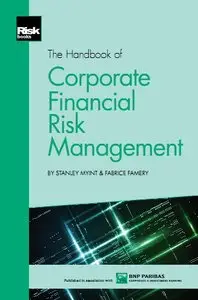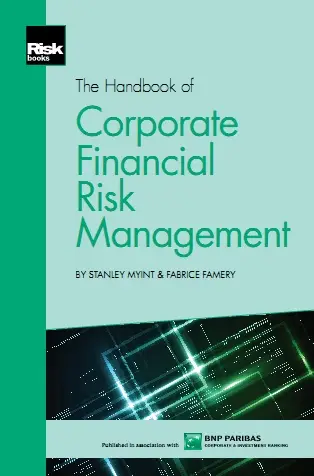The Handbook of Corporate Financial Risk Management by Stanley Myint, Fabrice Famery
2012 | ISBN: 1906348928 | English | 384 pages | PDF | 6 MB
2012 | ISBN: 1906348928 | English | 384 pages | PDF | 6 MB
The economic environment left exposed in the wake of the financial crisis of 2007-2012 has revealed a vast amount of risk-related problems and new case studies in waiting. Due to the increasing amount of new regulations which were imposed in order to contend with the results of the crisis, companies have amped up their scrutiny of risk management, becoming far more conservative. Thus corporate risk management has become even more important than it was before, with the result being that people in the industry are looking for new solutions to new problems. The job of the corporate risk management department is to identify potential sources of trouble, analyse them, and take the necessary steps to prevent losses. This is the fundamental mission that The Handbook of Corporate Financial Risk Management by Stanley Myint and Fabrice Famery keeps in mind, with each section of the Handbook containing a series of real-life case studies. The book is organised intuitively, so the reader is able to approach the book section by section chronologically, or by whichever case study is most pertinent to their situation. Stanley Myint and Fabrice Famery use their wide ranging experience, every chapter engages with a case study which illustrates for the reader exactly how to improve the effectiveness of their financial risk management programmes in a given scenario, working through the problems that recur with the most frequency. The reader is led step by step to the solutions that have worked for some of the largest European companies, which they can then adapt to their own circumstances in order to create a robust risk management framework. The book is divided into six sections. Within each section, a collection of cases are presented which are associated with this overall section heading. Funding The first section focuses on a variety of issues related to corporate funding via fixed income instruments, with a particular focus on unsecured fixed income funding, (i.e. debt). Interest rates and inflation risks The second analyses what happens once debt-structure decisions have been made and the company in question is fully funded. Interest rate risks are introduced at this point and must be managed. Currency risk Section three examines currency (or FX) risk, which impacts all aspects of corporate finance, thus influencing all key performance indicators from profitability to leverage. Credit risk The fourth section presents a variety of cases which deal with credit risk, i.e. the risk of default by counterparties, which has become a prolific problem since the financial and sovereign crises. M&A related risks Section 5 examines risk management within the context of Mergers and Acquisitions ( M&A ). Risk management is an imperative part of the overall M&A process, with guidelines given in these chapters regarding how to go about implementing it. Commodity risk The final section presents two case studies which illustrate commodity risk. This particular type of risk can be split into one of two categories: cost risk and revenue risk, with a chapter devoted to each. The Handbook of Corporate Financial Risk Management provides solutions to the variety of financial risk management situations faced by corporate clients. This book is an essential resource for all risk management professionals and practitioners, from chief risk officers, risk management directors and chief financial officers, to corporate treasurers, foreign exchange dealers and corporate bankers.



